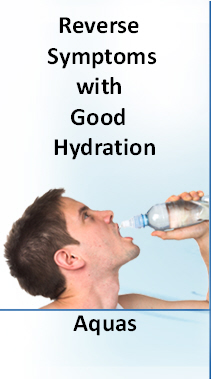Robert, Good day. I have a couple questions for you about negative pleasure but will give a brief history of myself first. Dx with pd in 2008 at age 42. I have not taken any pd meds of any type. Since dx I have tried numerous therapies to include: mercury filling removal, chelation, aspartame detox, lyme tx (both antibiotic and herbal), EFT, TMJ mouth piece, dental cavitation tx, hypnosis, shiatsu, chiropractic, acupuncture, scalp acupuncture, herbs, CoQ10, more supplements than I can list, glutathione IVs, vitamin IVs, DMPS IVs, nanobacteria supplements, colored laser therapy, ozone injections, detox baths, infrared detox, hyperbaric chamber, heavy metal detox, organic diet, copious reading on everything from emotional topics to body electronics, forceless spontaneous release as described by the Parkinson’s Recovery Project in Santa Cruz, and Howard Shifke’s protocol as described on his website. Possibly a few more, truthfully, there are so many it is hard to remember.
Unfortunately, I have observed no distinguishable benefit from any of them. Meaning, I have continued to be increasingly affected by pd on the same trajectory as always. In spite of this, I refuse to admit that pd is not reversible.
I recently purchased your book Road to Recovery from Parkinson’s Disease. About halfway through it, I am finding it to be useful, though as you can see from above I have tried a good many of the therapies with no observable benefit. That said, I was intrigued by the explanation of “negative pleasure” on about page 146. I did say to myself,
“No, I won’t heal from this disease. I like to feel this way.”
When I thought and said that, I felt a tinge of something, not sure what…relief…peace…resonance. Bottom line, I need to deal with/heal from the illogical process of negative pleasure acquired in childhood. My question for you is, what is the best way?
Response:
You are certainly doing incredible work! It sounds like you have landed on what may be a primary reason your symptoms linger despite all the work you have done – the haunting influence of negative pleasure. When an unconscious feeling of pleasure is attached to a negative experience (such as the symptoms of Parkinson’s) it becomes “negative pleasure” which is an attachment of pleasure to pain.
Negative pleasure (which actually most people have experienced but do not realize it) is entirely unconscious. This of course is why it is so terribly difficult to heal and why you asked the question in the first place. It is a concept that is foreign to many people, but one that can keep us in a place of illness year in and year out.
The attachment of pleasure to pain often occurs in early childhood. It is not an attachment that is not disengaged by resorting to logical reasoning alone.
I can happily report that you have made the most significant step already. Making conscious the role of negative pleasure as an obstruction to your recovery has taken you a long way toward healing it.
From my personal experience, you have to address the problem from both an intellectual (and logical) perspective and also address the underlying feelings that are involved. For me the latter challenge has been the most difficult.
On a purely logical plane, the question to ponder turns on the following:
What purpose does having symptoms of Parkinson’s serve me?
For example, perhaps having Parkinson’s disease has given you a reason to quit a job which was not in your best and highest good, a job that does not offer you pleasure and satisfaction. Before having the symptoms, your ego logic concluded you had to keep on working to take care of your family (or here … please fill in the gap with all the other reasons we can concoct for ourselves).
Or, perhaps having Parkinson’s gives you an excuse to become isolated and avoid contact with other people. Or … Obviously, there can be many answers to this question. It is important to reflect and meditate to find the answer that applies to your own situation. In other words, what do you get “not to do” that is intrinsically distasteful because you have Parkinson’s?
The goal in the end is to disassociate and untangle the dynamics of negative pleasure – to feel pleasure when there are pleasurable sensations and to feel pain when there is real pain to be experienced.
The reason it is so difficult to heal negative pleasure is that it comes from a place that has no words or logic. You can not talk it out of your body or will it out. So, how can you release an attachment of negative pleasure to Parkinson’s Disease?
Energy healers can provide help in this area. There will be a critical core of Brennan Healing Practitioners (all of whom have had extensive training and experience and know all about negative pleasure) who are well versed in this issue and help clients clear it out.
The Brennan healing work really is quite incredible I must say. It has been transformative for me. There are likely Brennan Healing Practitioners in your area who can help out as well.
Robert Rodgers, Ph.D.
Founder 2004
Parkinsons Recovery Membership
robert@parkinsonsrecovery.com
Olympia, Washington









